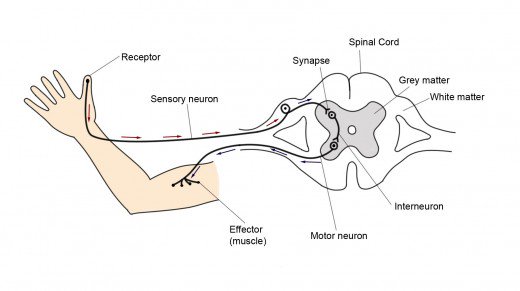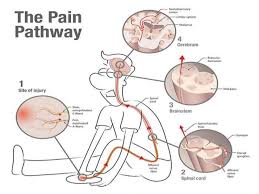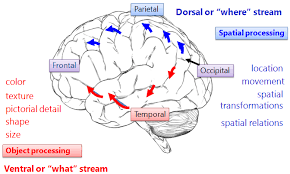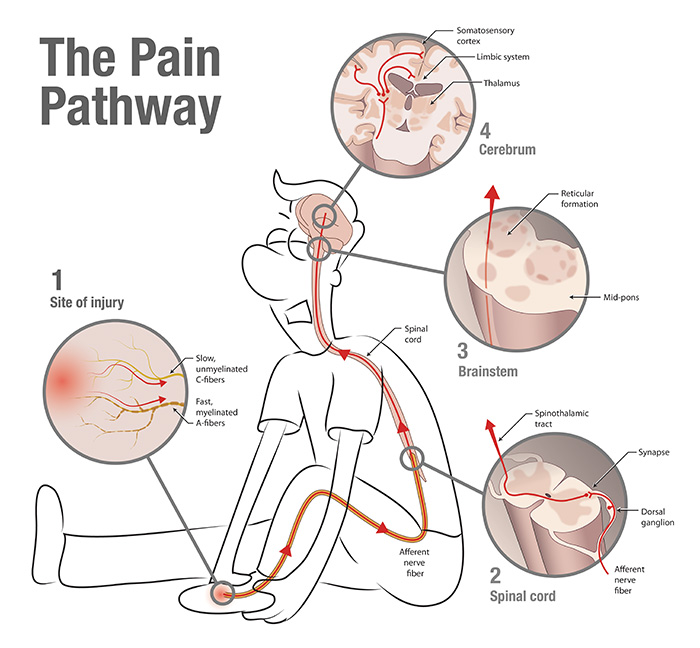Short answer
Increasing neural complexity only increases processing times when neurons are serially linked together.
Background
Neuronal conductance of action potentials takes time, as neuronal signals travel at a speed of 0.5 to 150 m/s through the axon (Purves et al., 2001). Furthermore, synaptic transmission between neurons takes time (in the order of. A chemical synaptic transmission takes approximately 0.5 ms (Katz & Miledi, 1965). As a consequence, stringing neurons together increases processing time.
For example, if we look at the pain response, the reflex arc is very short, covering as little as two synapses (Fig. 1). The moment you touch a hot pan, you pretty much instantly draw away your hand. This process precedes even before you become consciously aware of the fact you touched something painful. This is because conscious awareness happens in the brain, involving a longer distance to be covered from your finger, and because it involves many more synapses including the brainstem, lower cortical areas and higher cortical areas (Fig. 2).
Processing time does not necessarily have to increase when processing complexity is increased, as long as the processing takes place in parallel. For example, multiple visual pathways in the human brain run in parallel, for example the 'what' and 'where' processing in the brain in the ventral and dorsal streams (Van Polanen & Davare, 2016), as depicted in Fig. 3.

Fig. 1. Pain reflex arc. source: Owlcation

Fig. 2. Conscious pain pathway. source: neuwritewest

Fig. 3. Parallel processing of 'what' and 'where' information in the visual system. source: Brainscape
References
- Katz & Miledi, J Physiol (1965); 181(3): 656–70
- Purves et al. (eds), Neuroscience, 2nd ed. Sunderland (MA): Sinauer Associates
- Van Polanen & Davare, Neuropsychologia (2015); 79: 186–91
